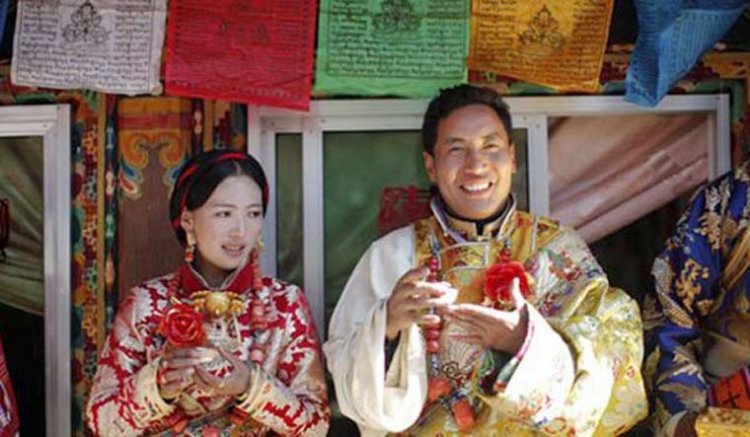Tibet: China Promoting ‘Unity Via Marriage’
STORIES, ANALYSES, EXPERT VIEWS

China annexed Tibet 70 years ago. On May 23, 1951, Tibet and China signed an “Agreement on Measures for the Peaceful Liberation of Tibet”, also known as the 17-Point Agreement.
Significantly, in his memoirs, the Dalai Lama said the agreement was forced “under duress” on the Tibetan delegates, and even the seals on the agreement had been forged. When he crossed the Indian border in March 1959 and reached Tezpur in Assam, the Tibetan leader immediately denounced the accord.
Strangely, the Communist Party of China decided to commemorate the May 23 event in August. Xi Jinping visited Tibet in July and on August 19, a high-level Beijing delegation led by Wang Yang, head of the Chinese People’s Political Consultative Conference and member of the politburo standing committee, landed in Lhasa to attend the 70th anniversary functions. Wang, fourth in the Communist pantheon, was accompanied by Adm. Miao Hua, member of the Central Military Commission (CMC) and director of the CMC political work department.
Claude Arpi (French-born author, journalist, historian and Tibetologist) notes the admiral’s presence was “certainly a first for landlocked Tibet.”
In his speech from Potala Square, Mr Wang said: “At present, the social situation in Tibet is harmonious and stable, the quality of development is constantly improved, people’s living standards are comprehensively raised, the ecological security barrier is increasingly solid, ethnic and religion aspects are harmonious, the frontier is consolidated, and the border is safe, the Party’s construction is comprehensively strengthened, and the new socialist Tibet is vibrantly alive.” It could all be wishful thinking, says Arpi.
“Besides the construction of 605 ‘moderately well-off’ villages on India’s borders, another way to stabilise the border is inter-marriage between Hans and Tibetans. Over the past 70 years, this has been rare: Tibetans have always been reluctant to lose their ‘Tibetanness’. This seems to be changing.
The Chinese media - China Daily - focuses on this ethnic aspect. “Official statistics showed that more than 40 ethnic minorities live in the Tibet Autonomous Region, and Tibetan inhabitants account for over 90 per cent of the 3.64 million population. Nowadays, families consisting of members of different ethnic backgrounds are quite common in Tibet.”
Whether it’s true or not is difficult to say, according to Arpi.
Chinese media also showcases model cases of inter marriages to be emulated by many more Tibetans: Beijing calculated if thousands of Tibetan girls marry Chinese migrants (for example, those coming to work on mega infrastructure development projects at the border), a page will be turned forever, with no chance for Tibet to again become Tibet in the future.
Arpi warns “both New Delhi and the Tibetan government-in-exile in Dharamsala must take up this issue seriously, otherwise border populations across North India will soon have to face new neighbours, with all the consequences it implies.”
















